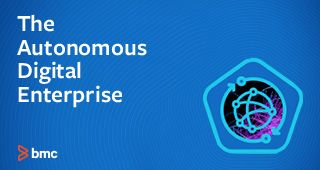The longer we work from home, the more I find myself wondering: what if we used this time to try something truly different? If you’re in the financial services space, you may have had enough newness this year to last a lifetime. Hear me out.
Combining the right technology with the right teams makes the improbable a whole lot more probable. In a market where so much is up in the air, why wouldn’t we seize this remote-working moment to automate in ways that don’t just enable us to react to whatever happens next; they empower our organizations to proactively shape that future?
Automating intelligently can help financial services organizations execute faster with fewer errors. It frees employees up from mundane tasks, while lowering costs and – often times – driving the kind of innovation that actually improves customer experiences. If those aren’t major priorities in 2021, I don’t know what is.
Banks have spent this year inventing, and reinventing, models to tackle the health and economic crises head on. Internal auditors are adapting processes quickly to best navigate the tumult in real time. Regulators are looking hard at standards, and calling for a more fulsome reporting story. Applying intelligent automation across data, workflows, applications, and systems can fuel your ability to deliver better across all those areas, and more. Making your people part of that automation journey takes the potential benefits of doing so to the next level – and engages them at the very same time.
The upside of automation isn’t new to IT professionals. One year ago, 60% of those we surveyed told us their companies were already using automation to complete 25% to 75% of tasks. Even more importantly, 57% of them said multiple departments collaborate on the larger automation strategy. That’s the real key.
If we can bring automation out of the IT friend zone, and use this unique moment in work-from-home history to engage broader internal audiences in its power, we can tee our financial services organizations up to tackle what’s ahead in entirely new ways.
Your people represent a rich pool of possibility in a noisy market ripe with choice, non-traditional competitors, and new entrants. It’s time to automate in ways that give your own teams more time to pull new insight from the data, and channel that intel into powerful solutions and strategies built for tomorrow’s realities.
How can you capitalize on this time to level up both automation and teams?
- Incentivize. Putting formal frameworks around automation and rewarding leaders and fast followers can spur progress across organizations. Educating people from all departments on the upside of fewer manual and repetitive tasks, and giving adoption credit where credit is due, creates an army of internal influencers. Incentives are a great way to create grass-routes interest in, and support of, automation.
- Upskill. I don’t have to tell you: working from home can be isolating. There are only so many ways to keep folks dialled into culture and collaboration when we’re spread apart. Using this time to train or retrain employees whose tasks are now automated can further automation, and evolve workforces. That’s not just good for your business; it’s good for your people, too. Creating opportunities to learn and grow as a direct result of automation can turn working-from-home into a more engaging experience that simultaneously bolsters your competitive advantage in the market.
- Measure. Everyone loves a good news story. Tracking the ways automation is moving the needle using solid metrics is fundamental to the overall success of your automation efforts. That’s how you demonstrate ROI, and secure future investments. Fleshing that story out with compelling qualitative use cases and examples gives the narrative new legs. That makes it more relevant for your people, and encourages others to follow suit.
I see opportunity everywhere – particularly for financial services organizations that refuse to let uncertainty slow them down. Let’s embrace this time to implement the technology we’ve longed to try; to take steps closer to becoming the autonomous digital enterprises our predecessors only dreamed of, and inspire our teams.
After all, if you can’t predict the future, why not go out there and define it for yourself?
Watch the replay of the webinar: DevOps, Data and the Distributed Workforce
Related reading
- Modern Infrastructure Requires a Connected View
- Does a More Resilient You Mean a More Resilient Customer?
- The Silent Security Threat to Financial Services Companies
- Stay Ahead of Cyber Threats in Financial Services
- Can Your Biggest Disruption Drive Your Greatest Innovation?
The Autonomous Digital Enterprise
These postings are my own and do not necessarily represent BMC's position, strategies, or opinion.
See an error or have a suggestion? Please let us know by emailing blogs@bmc.com.







